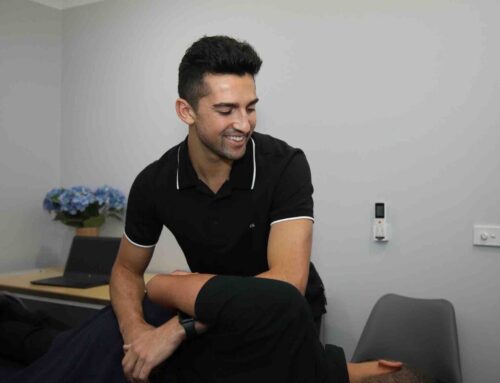 Prolonged sitting can result in negative impacts on our physical health. It has been proven that sitting for long periods day after day can lead to neck and back pain, poor mobility, and poor posture. Your daily sitting tally doesn’t only include work, but also sitting down to eat meals at home, and the countless hours seated while watching TV, studying, or reading. This blog will explore the threat of sitting for too long and provide you with some handy tips on how to reduce sitting in your daily life.
Prolonged sitting can result in negative impacts on our physical health. It has been proven that sitting for long periods day after day can lead to neck and back pain, poor mobility, and poor posture. Your daily sitting tally doesn’t only include work, but also sitting down to eat meals at home, and the countless hours seated while watching TV, studying, or reading. This blog will explore the threat of sitting for too long and provide you with some handy tips on how to reduce sitting in your daily life.
Before I dive into the dangers of prolonged sitting, I want to share some of my favourite – and most eye-opening research-based facts about sitting and its impact on our bodies (‘The Sitting Epidemic’ 2017):
- Sitting upright puts 40% more pressure on your lower spine compared to standing.
- Leaning forward while sitting puts 90% more pressure on your low back compared to standing.
- Sitting for 11 hours per day (or more) significantly increases your risk for earlier mortality (by as much as 40%). This is independent of other forms of exercise that you undertake… meaning that no matter how active you are, sitting for 11+ hours per day is still going to magnify your health risks.
- Sitting for only 4 hours per day can eliminate the risk factors associated with being sedentary.
The negative effects of prolonged sitting vs the positive effects of standing
Postural problems
- Sitting for hours on end can lead to slouched and hunched postures which can put increased strain on your neck, back and shoulders. This could lead to musculoskeletal pain and result in longer term problems in the spine.
- Standing, or breaking up periods of sitting is likely to lessen this postural stress on your muscles and joints.
 Decreased mobility & flexibility
Decreased mobility & flexibility
- If you are keeping your body in the same seated position, your muscles can become stiff and tight, resulting in decreased flexibility and movement.
- Standing more frequently allows the muscles around our hips to lengthen to their normal state while also building up the strength in our back and glutes.
Poor circulation
- Blood flow to our legs can become restricted after extended periods of sitting. This can lead to varicose veins, swelling and more rarely blood clots.
- When standing, the muscles in our legs are contracting more often, creating a pump to allow for adequate blood circulation.
Overall, making the choice to stand is going to provide our bodies with disease prevention, improving tone, physique and circulation, as well as promoting fat breakdown, back strength, and even higher levels of brain productivity.
Tips to reduce sitting time throughout the day
- Begin with our #1 tip!
- Count the hours you stand and move (at work/ home) each day and aim to increase this amount little by little.
- Use this strategy to eventually reduce your sitting time to as little as 4 hours per day.
2. Moving or changing posture every 20-40 minutes
- Your body will most likely respond well to movement, muscle engagement and a change in posture every so often, even if it means frequent small movements at your workstation.
- Install activity/ break reminders for your desktop OR download an app that reminds you to move (Try: Break Time, Move, Stand up!)
3. Ask your boss for a sit-stand desk. Or buy one for your ‘work from home’ space.
- You must ensure that you have the right set-up and posture while using your stand-up desk to reap the rewards. See below for the ideal set-up.
- Stand with supportive or flat shoes (or no shoes at all!) and distribute your body weight evenly.
- Avoid standing on hard surfaces. You can use an anti-fatigue mat as a solution.

Most of this advice will be suited to much of the population. However, some of you may have lower limb injuries, pain with standing or other considerations that may need to be individually assessed before jumping into longer days of standing.
Come and see one of the osteopaths at Pakenham Osteopathy where we can provide a full assessment to determine the best treatment and management plan to get you moving comfortably going forward. Book online, or call us on 5941 4157.




